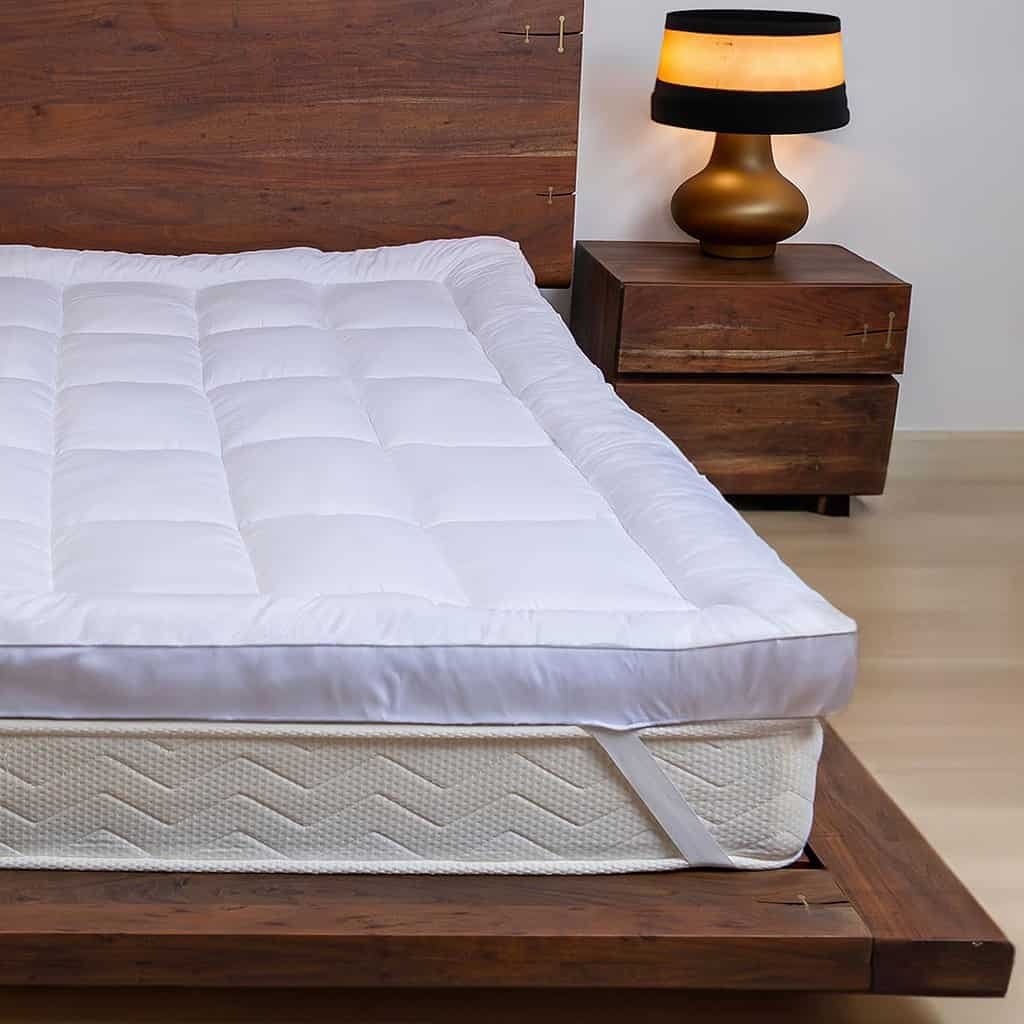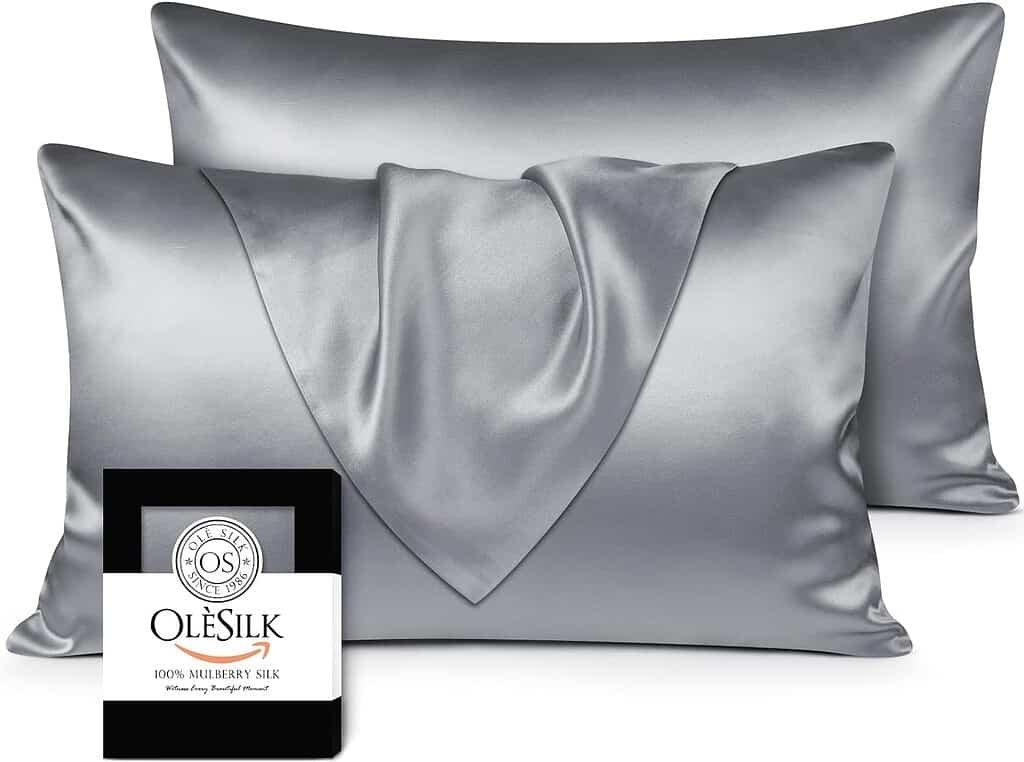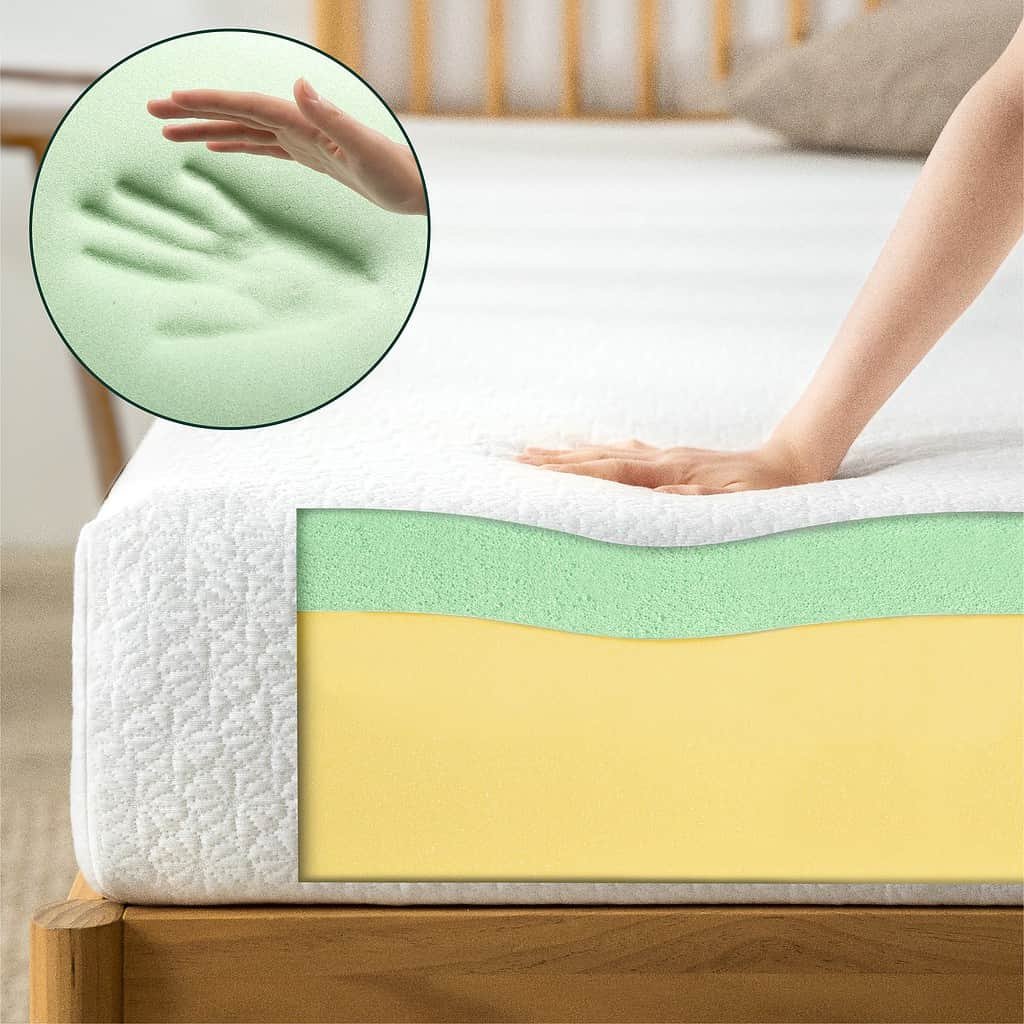Mattress Toppers: Transform Your Sleep Experience Effortlessly
A mattress topper is essential to one’s bedding, providing extra comfort and support for a good night’s sleep. These toppers come in various materials and sizes, catering to individual preferences and specific needs. By enhancing the sleeping surface of a mattress, toppers not only prolong the mattress’s lifespan but also offer various benefits, such as relieving pressure points, offering additional cushioning, and providing temperature regulation.
This article will discuss the different types of mattress toppers available, including memory foam, latex, down, and synthetic fill. Each material offers distinct advantages and disadvantages, making it crucial for potential buyers to understand their options and decide based on their requirements. Mattress toppers cater to various needs, from addressing health concerns like back pain and allergies to improving overall sleep quality. Furthermore, we will explore different retailers and brands that offer a variety of mattress toppers, as well as any ongoing deals and promotions to be aware of.
Understanding Mattress Toppers
Mattress toppers are an excellent addition to enhance the comfort and support of your existing mattress. They are designed to be placed on top of your mattress, adding an extra layer to improve your sleep experience.
One of the main benefits of mattress toppers is that they provide additional support to your body. This can be particularly helpful for those experiencing aches and pains and individuals with older mattresses who may have lost some of their support and firmness over time. By adding a mattress topper, you can extend the life of your mattress and improve your overall sleep quality without investing in an entirely new mattress.
Regarding comfort, mattress toppers can also make a significant difference. They are available in various materials, such as memory foam, gel, and hollow fibre, each offering a unique level of comfort and sleep experience. For example, memory foam mattress toppers tend to conform to your body shape and provide a balanced level of support and softness. At the same time, gel and hollow fibre options can offer a more responsive, breathable sleep surface.
It is essential to consider the firmness of a mattress topper as it can impact your sleep experience. Toppers are available in different firmness levels, ranging from soft to firm. Choosing the right firmness depends on your personal preference and sleeping position. Side sleepers usually prefer a softer topper to relieve pressure points, while back and stomach sleepers often benefit from a firmer option for added support.
Types of Mattress Toppers
Mattress toppers come in various materials and styles to suit a range of preferences and bed sizes, including king, single, and double mattresses. This section will discuss three popular types of mattress toppers: memory foam, feather and down, and microfibre.
Memory Foam Toppers
Memory foam mattress toppers are designed to provide additional support and contour to your body’s shape. They can help to relieve pressure points and distribute body weight evenly, making them a popular choice for those looking for a firm yet comfortable sleeping surface. Memory foam toppers are also known for their ability to isolate motion, making them ideal for couples sharing a bed. One drawback is that memory foam can sometimes retain heat, which may be uncomfortable for some sleepers during warmer months.
Feather and Down Toppers
Feather and down mattress toppers, typically filled with goose down, offer a soft, luxurious, and plump sleeping surface. Characterised by their natural and breathable materials, feather and down toppers can help regulate temperature while providing extra comfort. Although they may not give as much firm support as memory foam toppers, they are known for their lightweight and fluffy feel. However, it’s important to note that they may not be suitable for allergy sufferers or those who prefer a firmer sleep surface.
Microfibre Toppers
Microfibre mattress toppers are made from synthetic materials that mimic the feel of down, making them a more affordable and hypoallergenic alternative to feather and down toppers. They are soft and light and can provide a comfortable sleeping surface without the risk of allergen exposure. Microfibre toppers are easy to maintain and generally machine washable, making them a convenient option for many households. While they may not offer the same level of support as memory foam or the luxurious feel of feather and down toppers, they can still provide a comfortable and cost-effective solution for those looking to enhance their sleep experience.
Benefits of Mattress Toppers
Mattress toppers are an excellent addition to any sleep setup, offering comfort and support for a better night’s rest. They can enhance the overall feel of your mattress, providing a layer of cushioning that tailors the sleep surface to your specific needs.
- One key benefit of mattress toppers is the increased comfort they provide. Adding a layer of softness to your mattress helps to reduce pressure points, especially for those who sleep on their side or suffer from chronic pain. This can lead to a more restful and relaxing sleep experience, helping individuals wake up refreshed and energised.
- In addition to improved comfort, mattress toppers give a feeling of support essential for a good night’s sleep. They can reduce the pressure on the mattress springs while also offering proper alignment for the spine. For memory foam mattresses without springs, the topper can help distribute the sleeper’s weight more evenly, alleviating strain on the spine and joints.
- Another notable benefit is the extra cushioning that a mattress topper affords. This can be particularly helpful for older, worn-out mattresses or those too firm for one’s preferences. The additional layer provided by the topper can revive a tired mattress and breathe new life into your sleep environment.
- Moreover, mattress toppers can contribute to a fresh and hygienic sleeping space. Most toppers come with removable and washable covers, making maintaining a clean sleep environment simple. They also help to protect the mattress beneath, reducing the build-up of allergens, dust mites, and bacteria, ultimately prolonging its lifespan.
Considerations for Mattress Toppers
When choosing a mattress topper, there are several factors to remember to ensure you find the perfect fit for your individual sleep preferences. One of these factors is the firmness of the topper. Mattress toppers are available in various firmness levels, from soft to medium and firm options.
- The ideal firmness level should correspond to your personal sleep preferences and requirements for comfort and support.
- Comfort is another crucial factor to consider. A mattress topper should provide added comfort and support to your current mattress, helping to alleviate pressure points while you sleep. Memory foam and latex toppers are famous for their ability to contour your body, providing ample support and cushioning. However, personal preferences play a significant role in determining what type of topper material is the most comfortable for you.
- Breathability is essential, especially if you sleep hot or live in a warmer climate. Some mattress toppers are made with materials that promote airflow and temperature regulation while sleeping, such as gel-infused memory foam, natural latex, and down feathers. These materials can help dissipate excess body heat to provide a cooler sleep surface.
- Thickness: Toppers are available in various thicknesses, ranging from 2 to 4 inches. The appropriate thickness depends on your particular needs – a thicker topper may be suitable for those who require more support or cushioning. At the same time, a thinner option may suffice for slight adjustments in comfort.
- Size: Ensure the topper you choose corresponds to the size of your mattress. Toppers are typically available in standard bed sizes, including single, double, king, and super king.
- Allergies: If you suffer from allergies, opt for a hypoallergenic mattress topper made from materials that resist common allergens like dust mites, mould, and mildew.
- Price: Mattress toppers have a wide price range, with basic options available for under £20 and premium toppers costing significantly more. Consider the features and materials to find a product that offers value for money and meets your specific requirements.
Understanding Mattress Sizes
When choosing a mattress topper, it’s essential to understand the various mattress sizes available. Selecting the right size for your bed ensures added comfort and a better sleep experience. The most common mattress sizes in the UK are Single, Double, and King Size.
- A single mattress measures 90cm x 190cm (3ft x 6ft 3in), making it an ideal choice for children’s bedrooms or guestrooms with limited space. Single mattress toppers are specially designed to add an extra layer of comfort to these beds, ensuring a relaxing sleep for the user.
- A Double mattress, measuring 135cm x 190cm (4ft 6in x 6ft 3in), is a popular choice for couples as it provides ample space for two people without occupying too much room in the bedroom. Double mattress toppers enhance comfort by providing additional cushioning, aiding in relaxation and proper body support. This resource can give more details on double bed mattress topper sizes and depths.
- King Size mattresses are larger still, measuring 150cm x 200cm (5ft x 6ft 6in), providing a spacious sleeping surface for couples who prefer more personal space. King Size mattress toppers are designed to fit this size, ensuring that the entire mattress surface is covered and optimising the comfort of the bed. For more information about these mattress toppers, look at this guide. Understanding mattress sizes and selecting the appropriate mattress topper will improve your sleeping experience. Remember to consider the dimensions of your bed when making a decision, as this will determine your topper’s required size. Using a topper that perfectly fits your mattress will provide ultimate comfort and enhance the quality of your sleep.
Mattress Protectors and Toppers
Mattress protectors and toppers serve a valuable purpose in ensuring the longevity and cleanliness of your mattress. They provide additional comfort and safeguard your mattress from everyday wear and tear, spills, and allergens. Let’s explore the key features and benefits of using a mattress protector and topper.
- A mattress protector is a removable layer made from various materials such as cotton, polyester, or polyurethane. It encases your mattress thoroughly, safeguarding it from spills and stains. Furthermore, it effectively keeps dust mites, bacteria, and allergens at bay, ensuring a hygienic sleeping environment. A clean mattress contributes to better sleep quality and overall health.
- A mattress topper, on the other hand, is designed to enhance your bed’s comfort and support. They come in varying thicknesses and materials, making memory foam a popular choice among consumers. Memory foam toppers can conform to your body shape and alleviate pressure points, promoting a restful night’s sleep. Mattress toppers also help maintain an optimal sleeping temperature by promoting air circulation and dissipating heat.
- Both mattress protectors and toppers are easy to clean, with most machine washable. Proper care of these bedding accessories will prolong their life and ensure a healthy sleeping space. Additionally, investing in a good quality mattress protector or topper can save you from the expense of purchasing a new mattress prematurely.
Allergy Considerations
When selecting a mattress topper, allergy sufferers should carefully consider various factors. One important aspect is to opt for an anti-allergy or hypoallergenic mattress topper. These toppers are designed to minimise the chances of triggering allergies by creating a cleaner sleeping environment.
- A popular choice for anti-allergy mattress toppers is feather and down fillings. Although some people with allergies may be sensitive to these materials, many high-quality feather and down toppers are thoroughly cleaned to remove allergens. Alternatively, synthetic fillings such as microfibre are an excellent option for hypoallergenic toppers. Microfibre is less likely to harbour allergens, making it an ideal choice for allergy sufferers.
- Maintaining a clean and hygienic sleeping environment is essential to reduce allergy symptoms further. Regularly washing your topper in hot water can help eliminate allergens like dust mites and mould. Some toppers are machine washable, making maintaining a clean sleeping experience easy.
- In addition to selecting a hypoallergenic filling, the thickness of the mattress topper plays a crucial role in protecting against allergens. Thicker mattress toppers provide a barrier between the sleeper and the dust mites, mould, and mildew that may cause allergies.
- When considering allergy factors for mattress toppers, choosing a hypoallergenic option with a suitable filling material and thickness is vital. Regular cleaning and maintenance will further assist in creating a healthier sleeping environment for allergy sufferers.
Supreme Comfort with Pillows
Finding the perfect pillow can significantly enhance and provide supreme comfort for a good night’s sleep. Pillows support the neck and head, promoting correct spinal alignment. Selecting a pillow that offers snug comfort and optimum support is essential for quality rest.
- Choosing a suitable pillow is considering one’s preferred sleeping position. Side sleepers can benefit from a plump pillow, providing enough support to fill the gap between the shoulder and head. On the other hand, back and stomach sleepers may prefer a softer, flatter pillow that aligns the head with the spine, preventing excessive pressure.
- The marketplace has a range of pillow materials, such as memory foam, feather, and hollow fibre. Memory foam pillows offer excellent support and adjust to the head and neck contours, providing a tailored experience. Feather pillows are known for their luxurious softness and supreme comfort, while hollow fibre pillows are hypoallergenic and offer cosiness with a fluffy feel.
- To further enhance the sleep experience, a mattress topper can be a practical addition to the bed. They not only add an extra layer of snug, but they also increase the mattress’s lifespan. Combining a well-chosen pillow and mattress topper can transform the sleeping environment into a haven of supreme comfort.
Caring for Your Mattress Topper
One of the essential aspects of maintaining a mattress topper is keeping it clean and fresh. Regular care can prolong the life of your topper and improve your overall sleep quality. This section will discuss several tips for taking care of your mattress topper.
- Firstly, using a mattress protector on top of your topper is essential. A protector is much easier to clean than a topper and will help keep your bed and topper fresh in between washes. It is recommended to wash your topper every 6 months.
- When cleaning your mattress topper, always follow the manufacturer’s instructions. Some mattress toppers can be machine-washed, while others may require spot cleaning or dry cleaning. Make sure to check the care label before attempting any cleaning.
- One way to keep your topper fresh is by rotating it regularly. This ensures even wear and prevents the development of indentations or sagging, particularly on the edges of your topper. Rotating your topper every three months is advised for the best results.
- In addition to keeping the topper clean, proper storage is also crucial. Keep your mattress topper in a cool, dry place when storing it. Avoid placing heavy items on top of it to prevent deformation. Wrapping your topper in a breathable, protective cover may be helpful before storing it to preserve its freshness and cleanliness.
Frequently Asked Questions
What type of topper provides the most comfort?
The comfort of a mattress topper largely depends on personal preference. Some individuals may find memory foam toppers offer excellent pressure relief and contouring, while others may prefer the plushness of a down or down-alternative topper. Also, latex toppers can provide support and comfort for sleepers who enjoy a responsive surface. It’s essential to determine your preference and comfort needs when selecting the right topper for you.
How often should I replace my mattress topper?
A mattress topper’s replacement frequency depends on quality, usage, and care routines. However, as a general rule, most toppers should ideally be replaced every 3-5 years to ensure optimal comfort and hygiene.
Can a topper help alleviate back pain?
A mattress topper can help alleviate back pain, especially if it provides additional support and contouring. Memory foam and latex toppers are particularly beneficial for back pain sufferers as they distribute body weight evenly and conform to your body’s shape, reducing pressure points. However, choosing a topper with the right thickness and firmness is important based on your weight and sleeping position to maximise the benefits.
What is the ideal thickness for a mattress topper?
The ideal thickness for a mattress topper varies depending on your preference and the level of comfort and support you desire. Toppers typically range from 1.5 inches to 4 inches in thickness. A thinner topper (1.5-2 inches) subtly changes your mattress feel, while a thicker topper (3-4 inches) provides a more significant difference, adding extra cushioning and support. It is essential to consider your body weight and personal comfort preferences when selecting the appropriate thickness.
How can I select the right topper for my sleeping position?
Your sleeping position plays a crucial role in selecting the right mattress topper. Side sleepers generally require a thicker and softer topper to accommodate their hips and shoulders, while back and stomach sleepers need a firmer, thinner topper for proper spinal alignment. Additionally, combination sleepers should opt for a versatile topper that balances comfort and support to accommodate their various sleeping positions.
What materials are commonly used in mattress toppers?
Various materials are used in the construction of mattress toppers, each providing different benefits:
- Memory foam: Known for its contouring properties, memory foam toppers offer pressure relief and adjust to your body’s shape.
- Latex: These toppers provide a responsive surface, delivering support, durability, and breathability.
- Down and down-alternative: Plush and soft, these toppers add luxurious comfort to your mattress but may not provide as much support as other materials.
- Wool: Naturally hypoallergenic and temperature-regulating, wool toppers offer a comfortable sleeping surface without retaining heat.
- Gel-infused: These toppers combine features of memory foam with added cooling capabilities, reducing heat retention.



